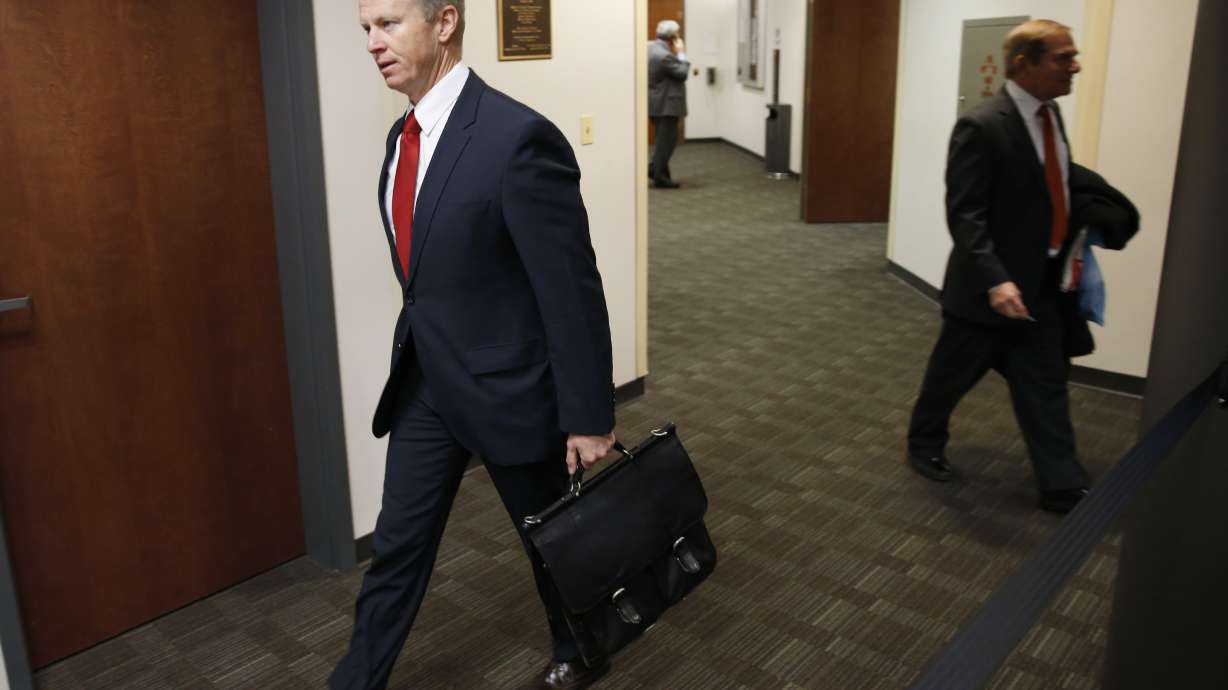Estimated read time: 4-5 minutes
This archived news story is available only for your personal, non-commercial use. Information in the story may be outdated or superseded by additional information. Reading or replaying the story in its archived form does not constitute a republication of the story.
CENTENNIAL, Colo. (AP) — A clear pattern is emerging in the murder trial of Colorado movie theater shooter James Holmes.
Prosecutors are weaving dry facts into a powerful story, by alternating technical testimony with the graphic and emotional recollections of survivors.
"You've got a lot of scientific stuff, a lot of police action, things that can be very technical," said Karen Steinhauser, a Denver defense attorney and former prosecutor. "What prosecutors are trying to do is make sure the emotional piece is played all the way through."
Experts say this storytelling strategy could pay off months from now, when jurors finally begin deliberating. The prosecution wants them to believe two things: That Holmes was sane when he killed 12 people and injured 70 at a Batman premiere, and that the pain and suffering he caused requires a guilty verdict.
The defense hopes jurors will focus instead on Holmes' mental state, and come away believing he was a schizophrenic in the grips of a psychotic episode so intense that he couldn't tell right from wrong.
Because Holmes admits being the lone gunman, his defense attorneys haven't cross-examined any of the victims, leaving their painful recollections uncontested.
"What the defense is trying to do is say, 'Ignore that story because we admit it all,'" said Mark Caldwell, program development and resource director at the Boulder-based National Institute for Trial Advocacy, which teaches persuasive storytelling techniques.
District Attorney George Brauchler, who has been an instructor for the institute, established the pattern in his opening statement by mixing pictures of each of Holmes' 12 victims with screen shots of text messages in which Holmes said he longed to kill people.
"Listening to his opening statement, it was clear he was using methods we teach," Caldwell said.
Telling a story, rather than spinning out a chronology, has become standard advice in law schools, and many instructors point to the lengthy O.J. Simpson murder trial as an example of what prosecutors should avoid. By putting on three weeks of complex, technical DNA evidence, Simpson's prosecutors "lost the jury. That evidence could have been put on in a couple of days," Steinhauser said.
On the other hand, staggering the emotional with the factual makes sense, because otherwise, "this jury can get oversaturated with the immensity of this tragedy," Denver defense attorney Craig Silverman said.
An FBI agent identified bag after bag of evidence Thursday. There was Holmes' body armor and a helmet with strands of the dyed-orange hair he wore that night, and an arsenal of weapons including a military-style assault rifle.
Another bag held two pink flip-flops, abandoned by someone fleeing in the chaos.
Prosecutor Karen Pearson piled them high on tables and then let jurors examine them before breaking for lunch.
Earlier this week, another FBI agent who explained how Holmes wired his apartment to cause a deadly explosion was followed by a tearful gunshot victim who described losing sight of her children and stumbling over bodies in her panic to escape the theater.
Jurors then heard the first public comments from Holmes' professors at the University of Colorado, who described him as smart but unenthusiastic, and struggling in a graduate-school environment where students have to show initiative.
Another victim then took the stand, describing the searing pain he felt when one of Holmes' bullets grazed his body.
In the prosecutors' narrative, Holmes transformed from a promising neuroscience student into the meticulous planner of one of the worst mass shootings in U.S. history. He faces 24 counts of murder and 140 counts of attempted murder, two for each person killed and two for each person injured. If the state proves beyond a reasonable doubt he was sane, he could be executed or sentenced to life in prison.
More than 85,000 pages of documents were entered into evidence before the trial, which is expected to drag into September. Holding the jurors' attention by alternating between the powerful and the technical is key, said Salt Lake City attorney Andrew Deiss.
"If you tell a story chronologically it sometimes loses its impact," Deiss said. "If you don't put that in little packets, there's no way they are going to remember it or assemble it."
When defense attorneys present their case, they will likely focus on Holmes' descent into mental illness, putting on witnesses who describe him losing his grip on reality.
Meanwhile, because jurors tend to remember what they hear first and last, it makes sense, Steinhauser said, that prosecutors closed one day's testimony by playing a 911 call from a shrieking 13-year-old who said her 6-year-old friend, Veronica, wasn't breathing.
Another day ended with video of Holmes, asking police whether any children had been hurt.
And the last thing jurors saw before leaving for a long weekend were photos of 10 bodies, sprawled in the aisles or wedged between rows of seats amid pop-corn and spent ammunition.
---
Associated Press Writer Dan Elliott contributed to this story.
Copyright © The Associated Press. All rights reserved. This material may not be published, broadcast, rewritten or redistributed.









